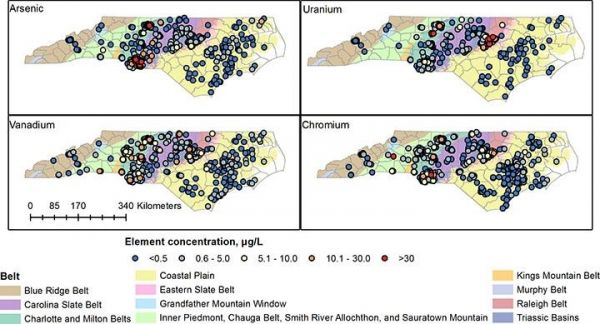Contaminants that occur together naturally in groundwater under certain geological conditions may heighten health risks for millions of North Carolinians whose drinking water comes from private wells, and current safety regulations don’t address the problem, a new Duke University study finds.
“Guidelines for safe drinking water are normally based on one element or contaminant,” said Avner Vengosh, professor of geochemistry and water quality at Duke’s Nicholas School of the Environment. “They tell us how much arsenic is okay to have in our water or the maximum amount of chromium that’s safe. But what if arsenic and chromium occur together? That’s something the guidelines aren’t equipped to address, even though recent research suggests exposure to multiple contaminants may increase toxicity.”
The Vengosh lab’s new study of four naturally occurring elements – arsenic, chromium, vanadium and uranium – in North Carolina groundwater wells highlights this disconnect, Vengosh said.
“Around 84% of the wells sampled in the Kings Mountain Belt and the Charlotte and Milton Belts of the Piedmont region contained concentrations of vanadium and chromium, in its more toxic hexavalent form, that exceeded health recommendations from the North Carolina Department of Health and Human Services,” said Rachel Coyte, a doctoral student at Duke University, who led the study. Of the four elements studied, vanadium and chromium were found to co-occur most frequently, she noted.
Read more at Duke University
Image: Naturally occurring concentrations of four environmental contaminants are mapped across the state of North Carolina. (Credit: Vengosh Lab, Duke University)


